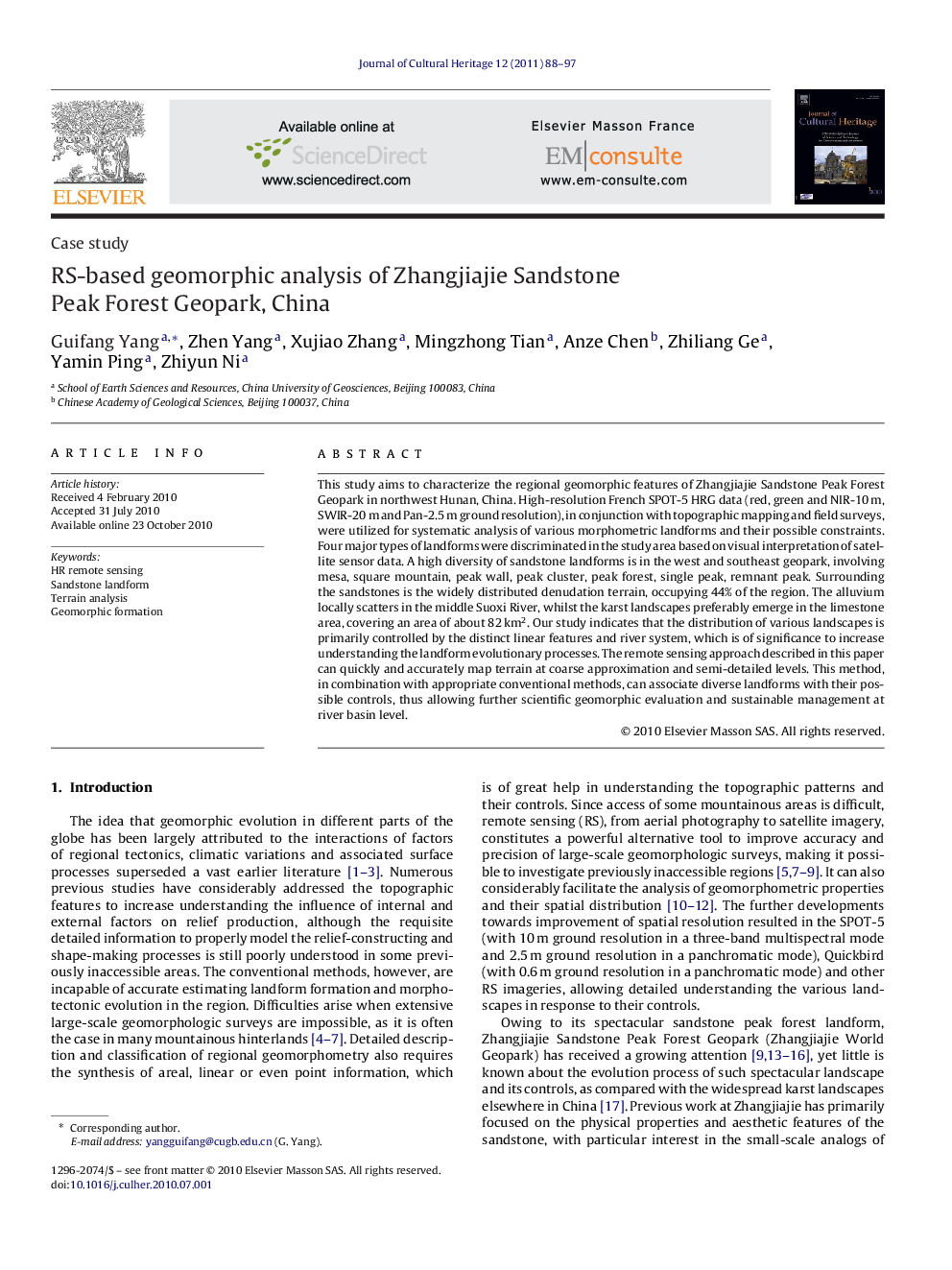| Article ID | Journal | Published Year | Pages | File Type |
|---|---|---|---|---|
| 1038504 | Journal of Cultural Heritage | 2011 | 10 Pages |
This study aims to characterize the regional geomorphic features of Zhangjiajie Sandstone Peak Forest Geopark in northwest Hunan, China. High-resolution French SPOT-5 HRG data (red, green and NIR-10 m, SWIR-20 m and Pan-2.5 m ground resolution), in conjunction with topographic mapping and field surveys, were utilized for systematic analysis of various morphometric landforms and their possible constraints. Four major types of landforms were discriminated in the study area based on visual interpretation of satellite sensor data. A high diversity of sandstone landforms is in the west and southeast geopark, involving mesa, square mountain, peak wall, peak cluster, peak forest, single peak, remnant peak. Surrounding the sandstones is the widely distributed denudation terrain, occupying 44% of the region. The alluvium locally scatters in the middle Suoxi River, whilst the karst landscapes preferably emerge in the limestone area, covering an area of about 82 km2. Our study indicates that the distribution of various landscapes is primarily controlled by the distinct linear features and river system, which is of significance to increase understanding the landform evolutionary processes. The remote sensing approach described in this paper can quickly and accurately map terrain at coarse approximation and semi-detailed levels. This method, in combination with appropriate conventional methods, can associate diverse landforms with their possible controls, thus allowing further scientific geomorphic evaluation and sustainable management at river basin level.
